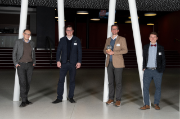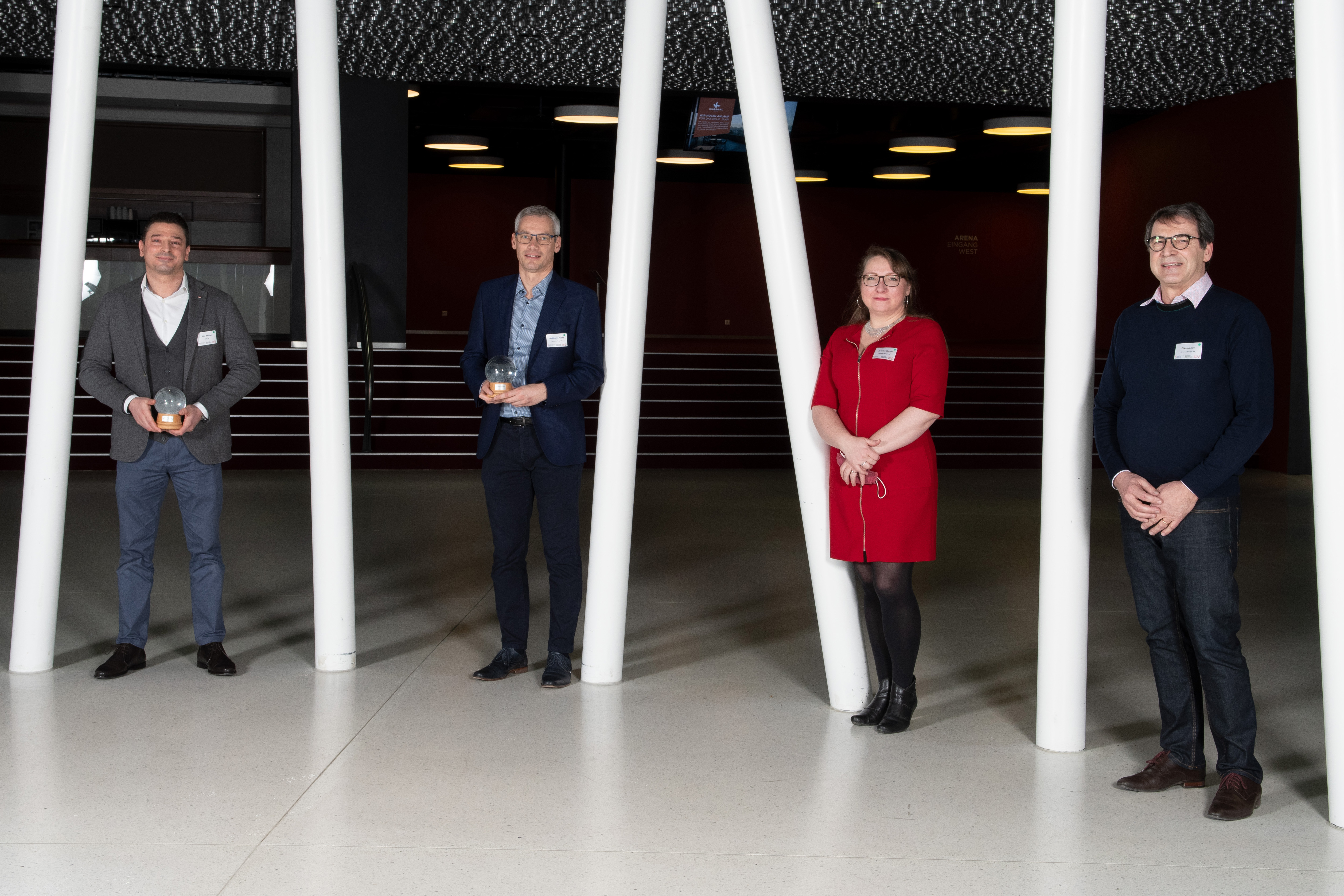The winners of the 2021 Watt d'Or awards have been chosen! This year's trophies were presented to the winners on 7 January 2021 in Bern. The following projects were chosen to receive the various awards (all of which are of equal value):
“Energy technologies” category

Adaptricity AG: Electricity cannot just be wasted – Adaptricity makes the distribution grids fit for the climate-neutral and renewable energy future
The path towards a climate-neutral Switzerland leads through greater electrification and decentralisation as well as increased digitalisation of the energy supply system. Distribution grids have a major role to play in all this. The higher level transmission grid with the large power plants, but increasingly more solar facilities, electro-charging stations, heat pumps, and finally the sockets at the consumer’s home “hang” on to these systems. The classical solution up to now has been to expand the distribution grids. A better, more cost-effective and safer solution is offered by start-up company Adaptricity. With its software solutions, Adaptricity delivers smart answers for the planning and transparent monitoring of grids so making distribution grids fit for a climate-neutral and renewable energy friendly future.
“Renewable energy” category

Romande Energie and ABB Schweiz: A power spot in the Alps – this alpine reservoir is also a solar power plant
High up in the Swiss Alps the atmosphere is rarer, solar radiation is stronger, and in winter the snow reflects the sunlight. Ideal conditions for the production of solar energy, in winter in particular. The west Switzerland based company Romande Energie is using the good alpine conditions to further develop its renewable electricity production and also promote Switzerland’s energy strategy. For these reasons the company has created a power spot on the Lac des Toules reservoir in Valais, at an altitude of 1,800 metres above sea level. In addition to energy from hydropower, the reservoir now also provides solar electricity from a floating alpine solar power plant. To realise this facility, which is unique in the world, many technical problems had to be resolved successfully by Romande Energie with the help of ABB Schweiz. Such is the success of the solutions that other energy supply companies both at home and abroad have indicated that they are interested in the project.
“Energy-efficient mobility” category

Hydrospider AG, Hyundai Hydrogen Mobility AG, H2 Energy AG, Association pro H2 Mobilität Schweiz: A cycle for renewable hydrogen for heavy goods traffic – a network of committed companies intends to make heavy goods traffic in Switzerland climate-neutral
Hydrogen will play an important role in worldwide efforts toward a climate-neutral energy supply. That is an undisputed fact today. Many countries, the EU included, are busy defining comprehensive hydrogen strategies. This is not just about the security of CO2-free supply but rather about a market for hydrogen and for other climate-friendly technologies worth billions. Switzerland is playing in the hydrogen “Champions’ League” thanks to a worldwide unique initiative. Hydrospider AG, Hyundai Hydrogen Mobility AG, H2 Energy AG, and Assocation pro H2 Mobilität Schweiz are constructing the world’s first commercial cycle for renewable hydrogen. This strongly committed network of companies is driving supply and demand for renewable hydrogen in parallel, without any state funding. The business model comprises hydrogen powered trucks, hydrogen filling stations and production and logistics for renewable hydrogen, Today there are about 50 hydrogen powered lorries in Switzerland; there will soon be more than 1,000. Other countries are following the development with great interest.
“Buildings and spatial development” category

Mettiss AG and Beat Kegel: Mr Kegel’s flair for physics – Mettiss AG and Beat Kegel have transformed an office block from the 1960s from an energy guzzler into a passive house thanks to intelligent planning
Most of Switzerland’s older buildings waste energy wholesale. Energy refurbishment costs a lot of money, takes a long time, and the complicated services technology confuses building owners. In St. Gallen there is a newly refurbished office building from the sixties which dispels such thoughts completely. Here Beat Kegel’s energy concept – “Kegel’s Rule” for short – was implemented in cooperation with the St. Gallen property company Mettiss AG. The refurbishment was realised rapidly and cost-effectively and the building now easily meets the passive house standard. This is due to a cost-effective low-technology heating and ventilation system incorporated in prefabricated parapet elements and connector fans in the doors. The new occupant, the University of St. Gallen, is very pleased with the climate in the rooms and the energy costs. “Kegel’s Rule” could catch on in the refurbishment of further office buildings as well as in dwelling house construction and new builds.

Umwelt Arena Schweiz and René Schmid Architekten AG: With heart and mind towards energy self-sufficiency with interconnection – the development at Männedorf is a model ecological and economic project
In their new development in Männedorf, Walter Schmid, energy pioneer and president of Stiftung Umwelt Arena Schweiz, and his son, architect René Schmid, René Schmid Architekten AG in Zurich, are relying on energy self-sufficiency with interconnection. The development’s entire annual energy requirement is produced on site in photovoltaic plant in the façades and on the roof with the additional help of a wind energy plant. However, the buildings are not completely autarchic for energy because they are connected to the electricity and gas grids. Half of the electricity produced on site is used directly by the tenants. The rest is conducted to a power-to-gas facility, converted to renewable gas, and stored to produce electricity and heat in winter. The interconnected grids handle seasonal storage of energy generated on the buildings. A concept that make possible a completely renewable, CO2-free energy supply and actively contributes to reducing the winter electricity shortfall.
Documents
Watt d'Or 2021
- Portraits of winners of Watt d'Or 2021
(PDF, 3.5 MB, 07.01.2021) ID: 10358 | 654
Links
Media
Last modification 07.01.2021





